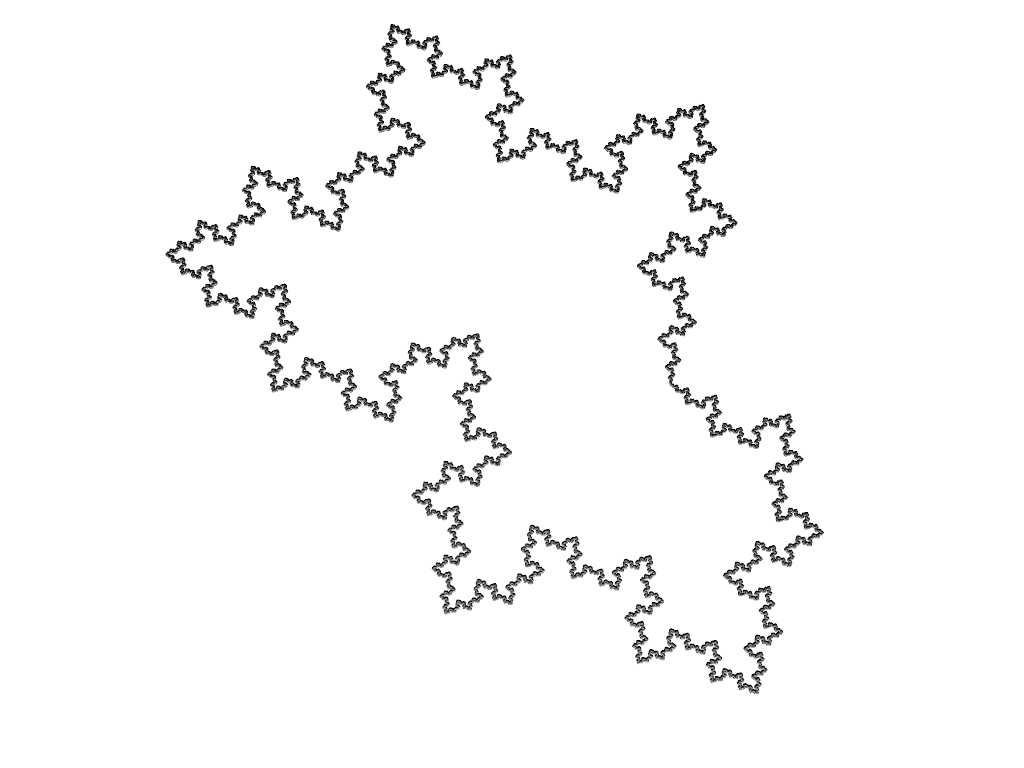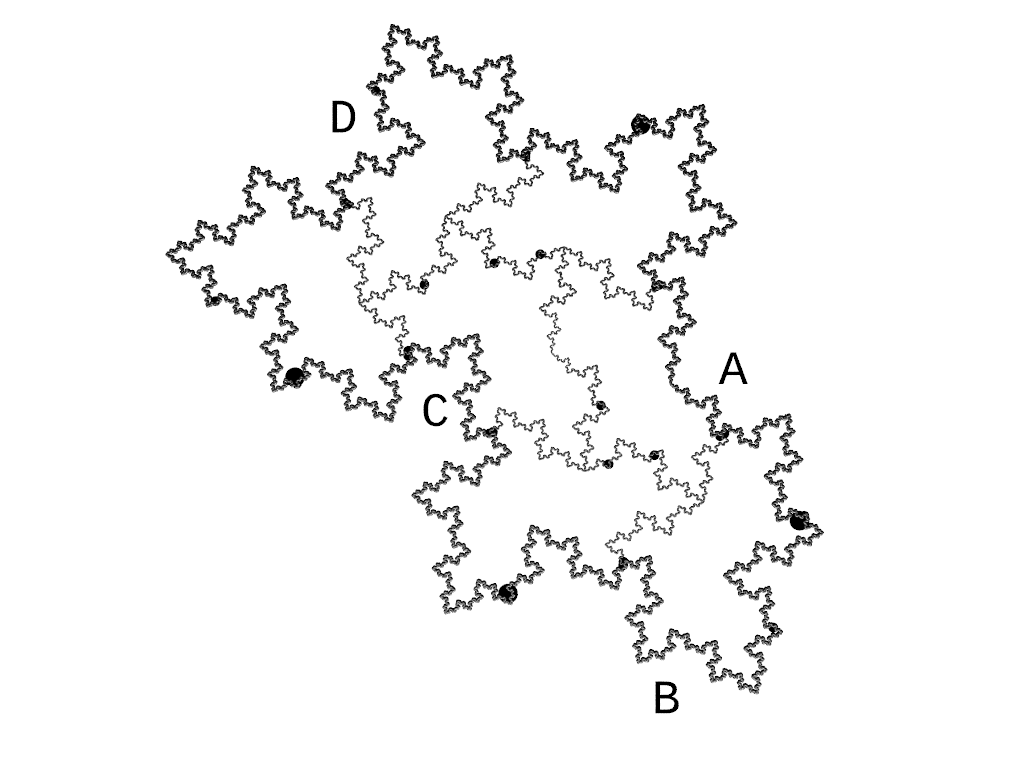

| H8 | H7 |
|---|---|
 |
 |
This can be done by partitioning the boundary (of e.g. the fractal H8)
in four pieces A, B, C, D and showing
how to obtain these four pieces as (an essentially disjoint) union of smaller copies of themselves.
This is illustrated in this image:

We end up with the substitution system
A -> dab
B -> cdc
C -> dcb
D -> cdcdc
where the small letters refer to the smaller copies. We seek the dimension \( \delta \) for which the
corresponding Hausdorff measures are positive and finite real numbers.
By enforcing \( |A| = \gamma |a|, |B| = \gamma |b| \) etc for some \( \gamma \gt 1 \), after a short
computation we obtain
\( \gamma = 2 + \sqrt{3} \) and the corresponding Hausdorff measures of the four
pieces satisfying \( |a| = |b| = |c|; |d| = \sqrt{3}|a| \).
The resulting (formally computed) Hausdorff dimension of the fractal boundary is
then given by
\[
d = \frac{\log (2+\sqrt{3})}{\log (\frac{3+\sqrt{5}}{2})} \approx 1.368376490708324
\]
Obtained by enforcing the fact that the linear growth factor is \( \Phi^2 = (3+\sqrt{5})/2 \).